Ter Apel Cloister
The village of Ter Apel has been in the news a lot lately. A huge refugee center there is the first home for hundreds of Syrians, Eritreans, Afghans and others seeking safety and a new life in the Netherlands.
Ter Apel’s claim to fame, though, if you can call it famous, is a medieval cloister and its church on the edge of town.
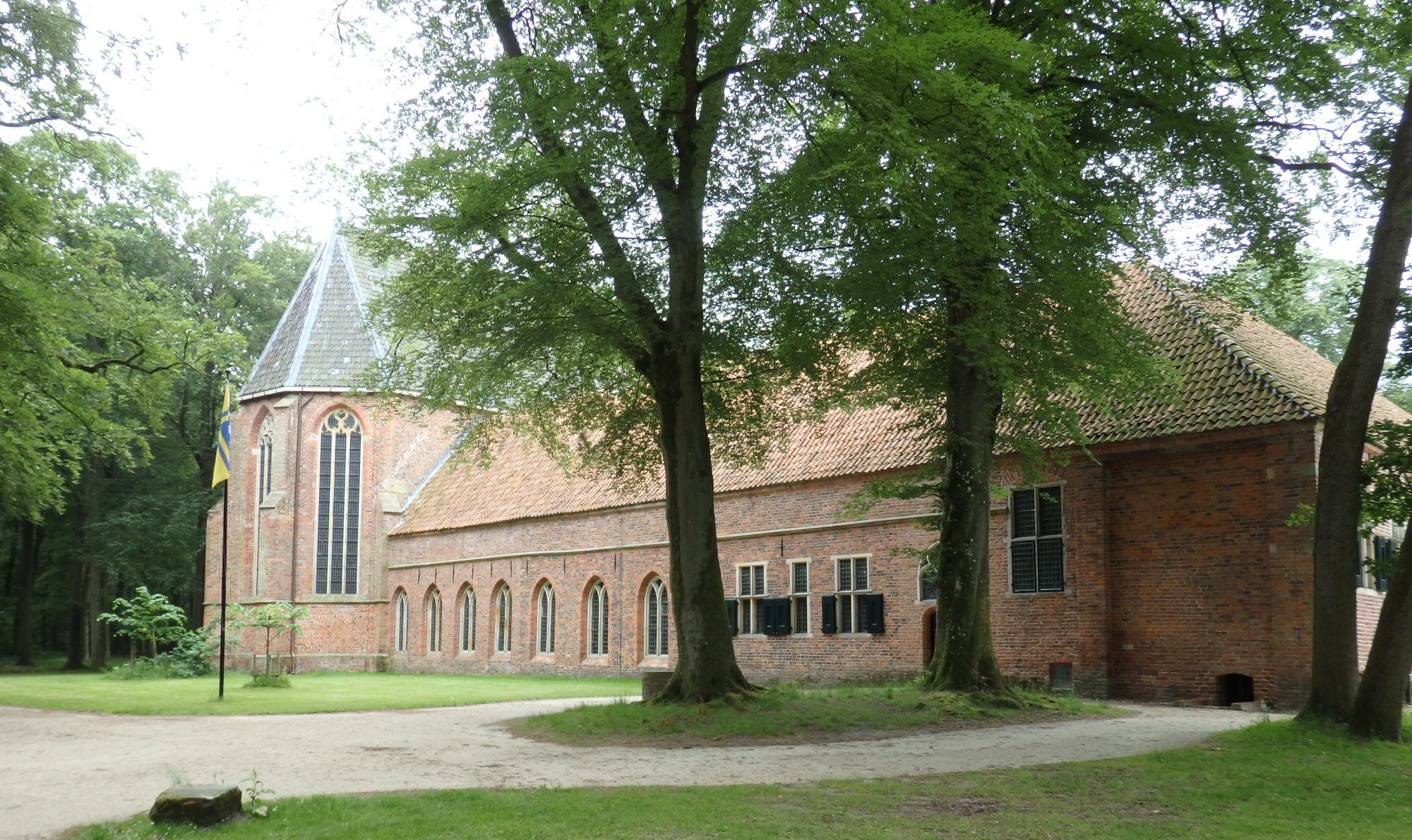
Recently I was in Ter Apel while my Syrian foster children went through the interview process required to gain permission to stay here. I, however, was not allowed to go with them into the interview—their social worker does that.
So with a few hours to kill, I decided to play tourist again and go explore Klooster Ter Apel. As you know, I love medieval architecture, but I had only ever seen the cloister before from the outside, when I went to a medieval fair on the grounds around it.
Read here about 38 things to see and do in Groningen province!
History
Klooster Ter Apel took about 100 years to build, starting in 1465. Meant to house monks of the Order of the Holy Cross, it only did so until 1593, when the Reformation ended Catholicism in the area. It doesn’t seem to have changed much, though, except for a few defaced statues; in fact, its last abbot became its first pastor.
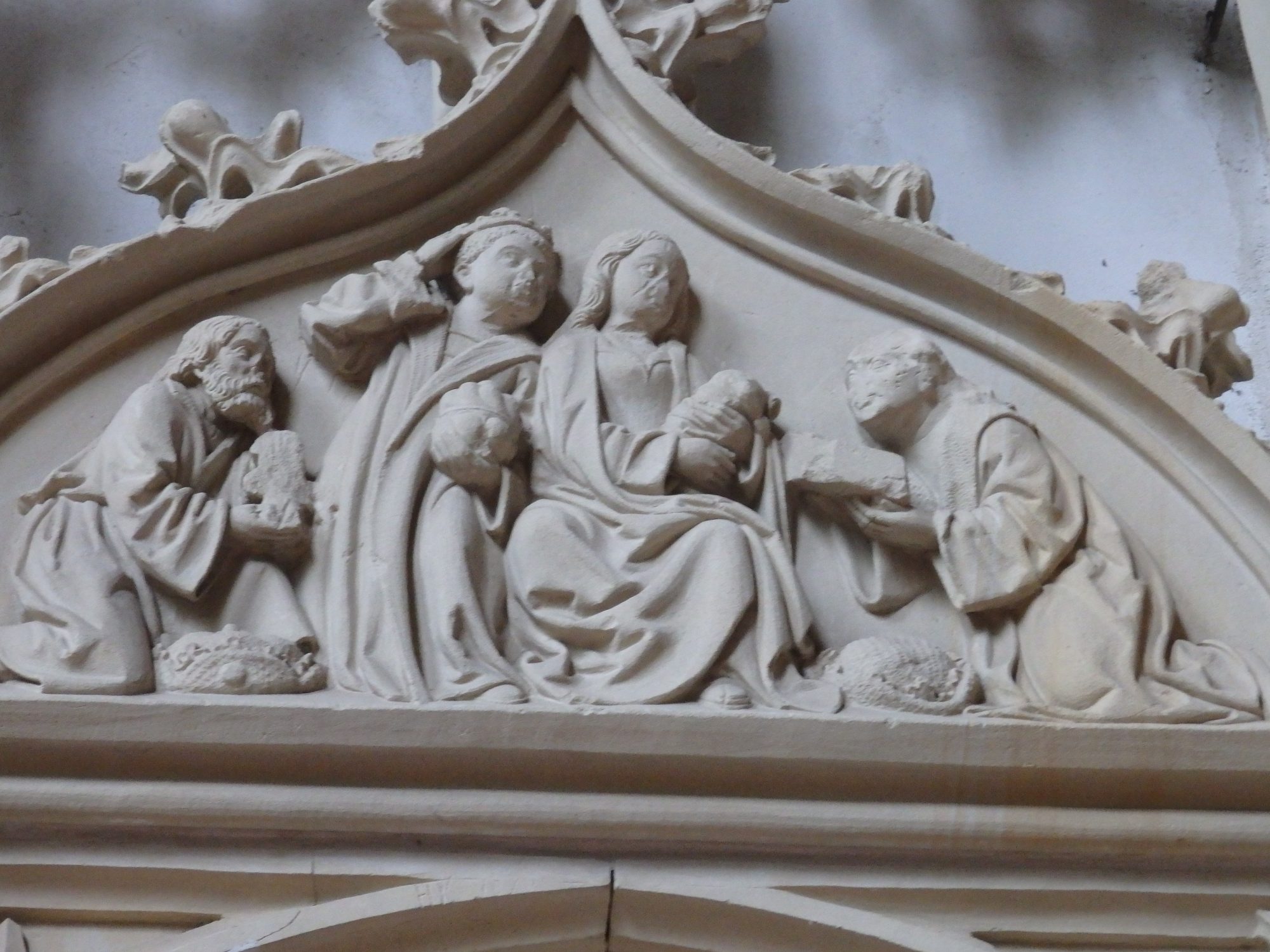
The official name is Klooster (Cloister) Domus Novae Lucis, which means “House of the New Light.” It is the only remaining medieval country cloister in northwestern Europe and is on the list of the top 100 Dutch Heritage Sites.
Cloister
Stepping inside means entering a quiet, contemplative world. Perhaps because it was a weekday morning, I had the cloister almost entirely to myself. Speaking in hushed tones, a group of elderly women explored along with me, but that was pretty much it.
The center of the building surrounds a garden, planted with small, neat hedges and medicinal plants. It was easy to picture the monks and nuns, in their simple robes, pacing the vaulted sides of this courtyard, silently praying.
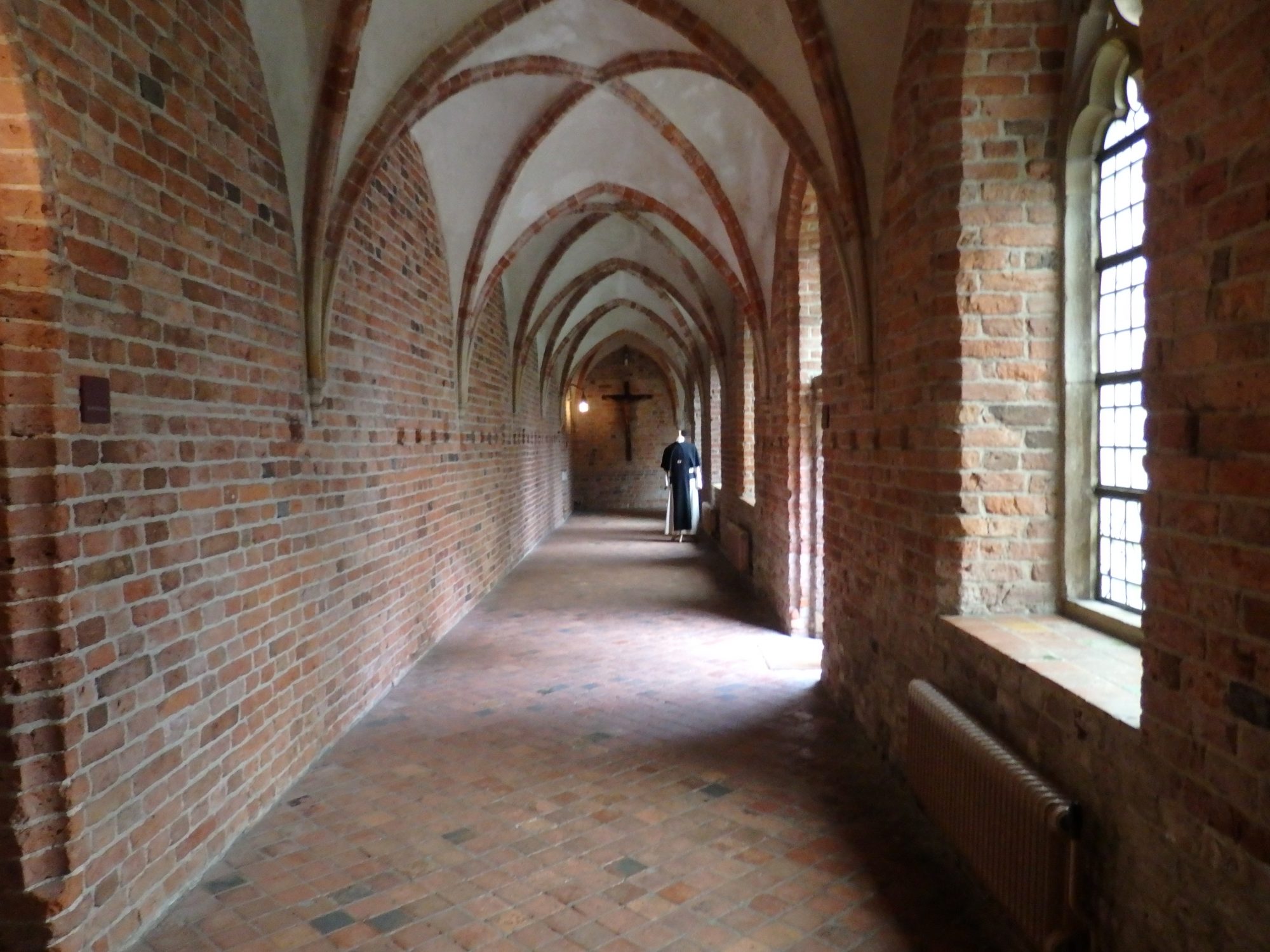
It felt a bit jarring to my eyes, but one side of the cloister is a modern addition, built in 2000 to replace a wing that burned down in 1755. The design respects the original architecture, but still stands out, if only because of the newness of the bricks.
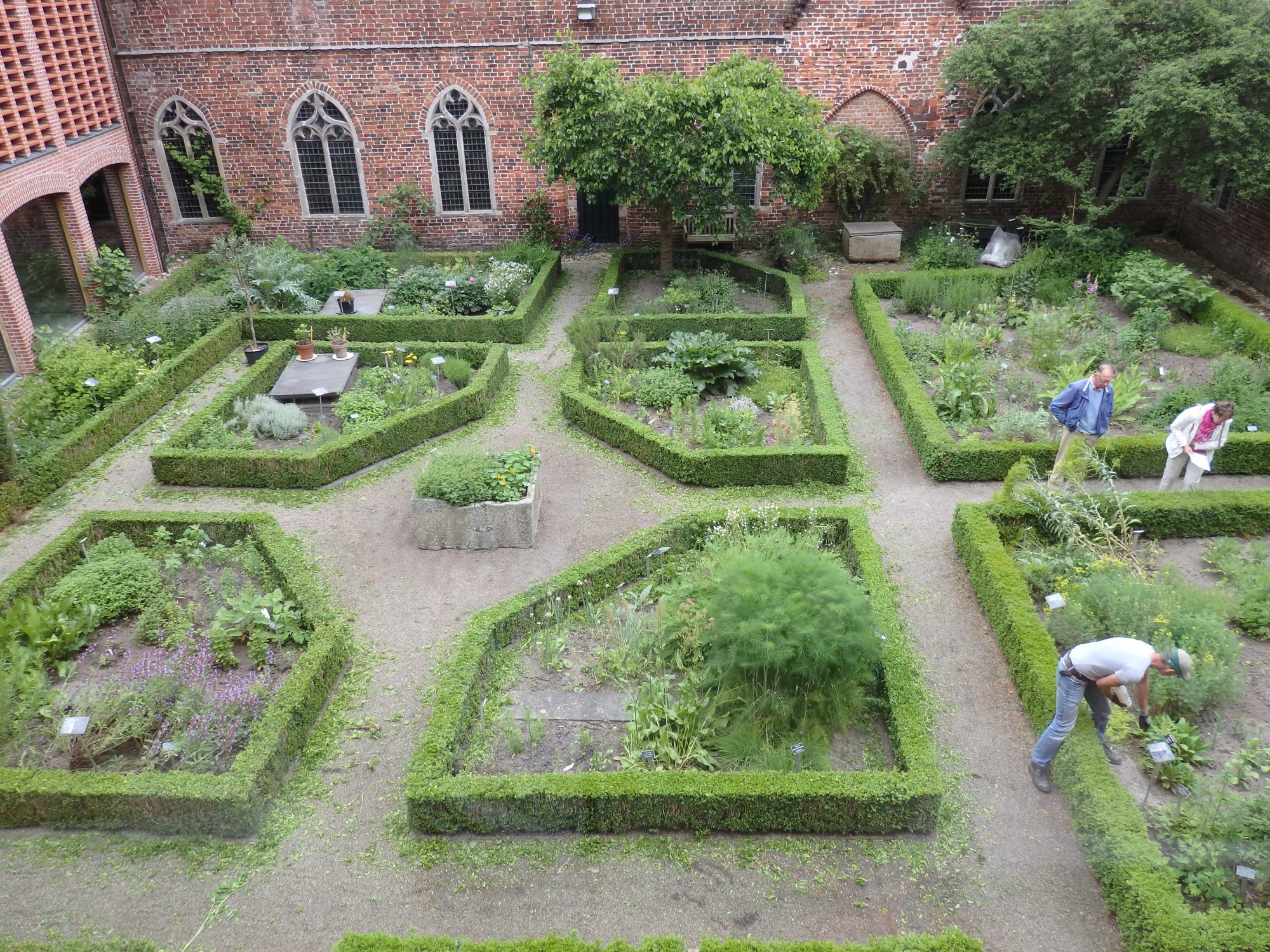
The rooms off the courtyard display various aspects of monastery life. One, for example, was the sacristy, where the priests put on their vestments for daily services. In another room visitors can view some richly embroidered vestments, along with two cases filled with a collection of holy water vessels.
Church
Adjoining the cloister is a church, split in two. One side, where the main altar stands, was where the monks themselves worshipped. Choir stalls line two sides, where the monks could sit, but often had to stand for prayers. When they stood, the seat folded up and they leaned on a sort of miniature seat called a misericord, each one carved with a face—some sinners and some saints—made to give the monks food for thought during the long church services.
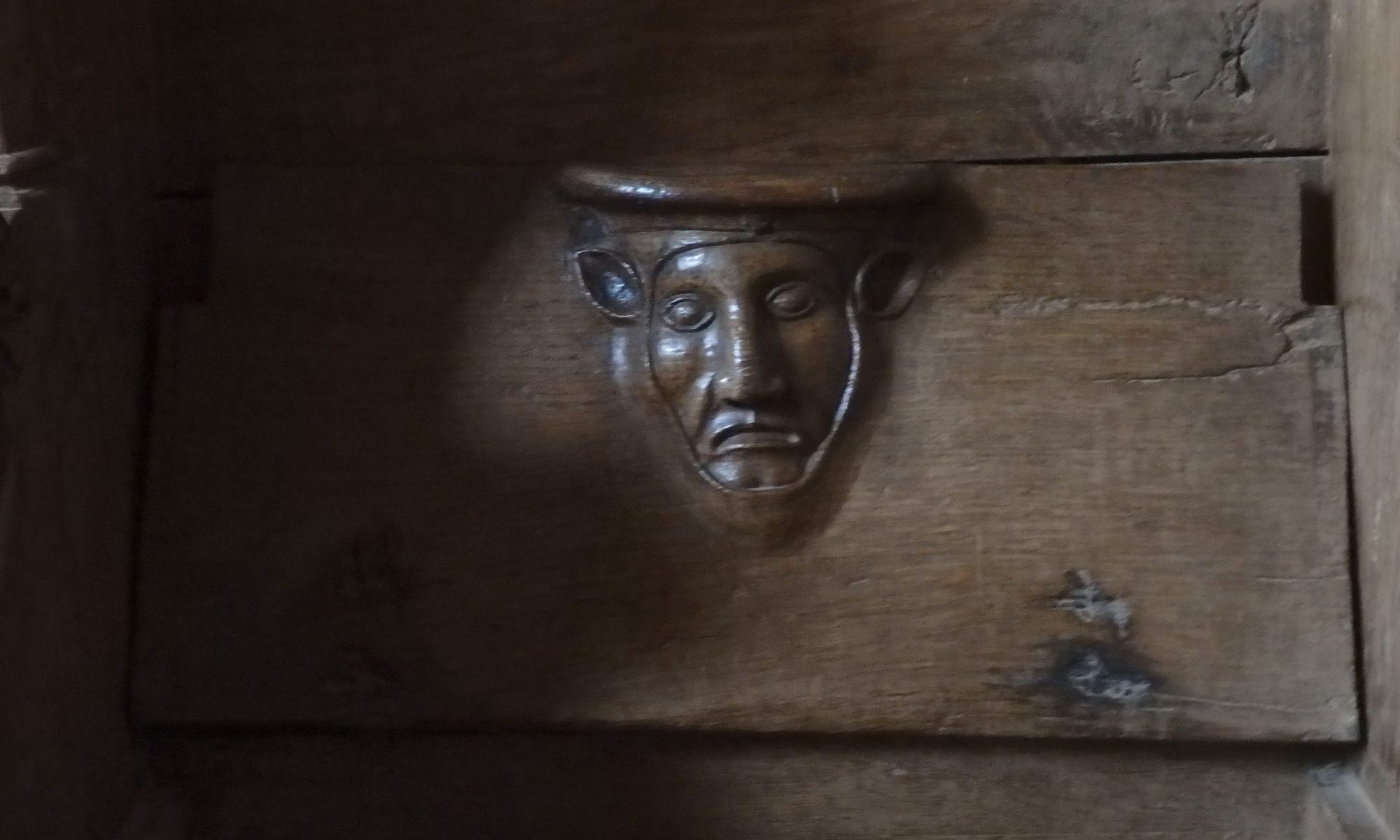
The other half of the church was for the local villagers, who would come here for their Sunday services, along with passing traders on their way to Münster or Groningen. A small altar stands there as well and the worshippers could presumably hear the chants of the monks on the other side of the wall. Today it’s fitted with rows of chairs, but in the Middle Ages the congregants would have had to stand, and much of the year it would have been a very cold place with that high ceiling.
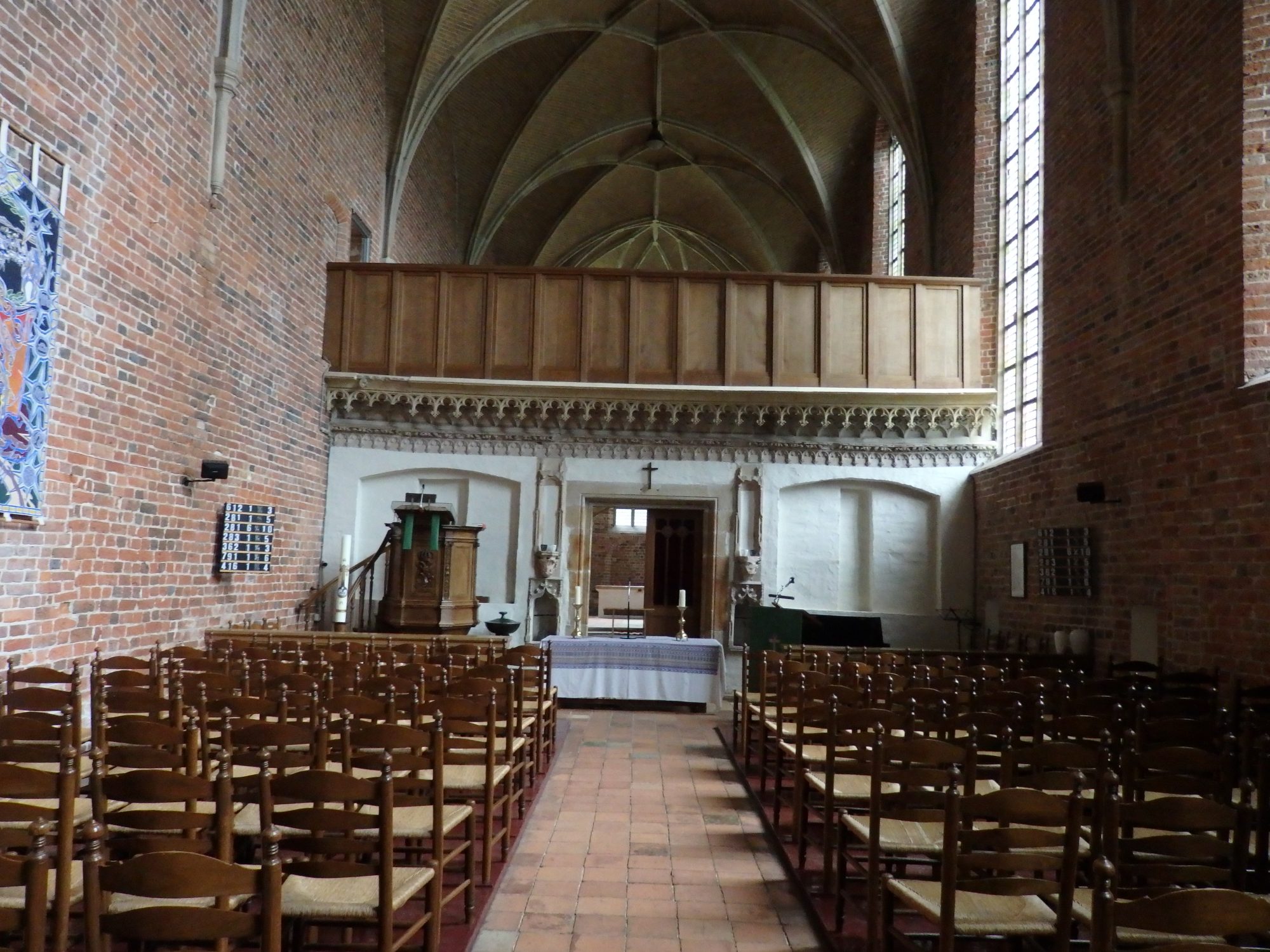
Upstairs in the attic, the brick arches of the church below are visible. Small reconstructed rooms give an idea of what an infirmary at Klooster Ter Apel in the Middle Ages would have looked like, as well as two monks’ bedrooms. An exhibition space houses a reconstruction of a scriptorium, where the monks spent long hours copying and illustrating Bibles and other religious manuscripts.
In this part of Europe, monks were, and still are, commonly connected to beer production. Ter Apel was (and is) no exception. Downstairs in the “proviandkelder” (provisions cellar), you can see and buy the various locally-produced beers.
Klooster Ter Apel used to control a very large domain in the region. Nowadays pretty woods surround it, which locals use for long hikes, dog-walking and bicycle touring. Living in Groningen, I rarely get to see really old or tall trees, so I enjoyed the sight.
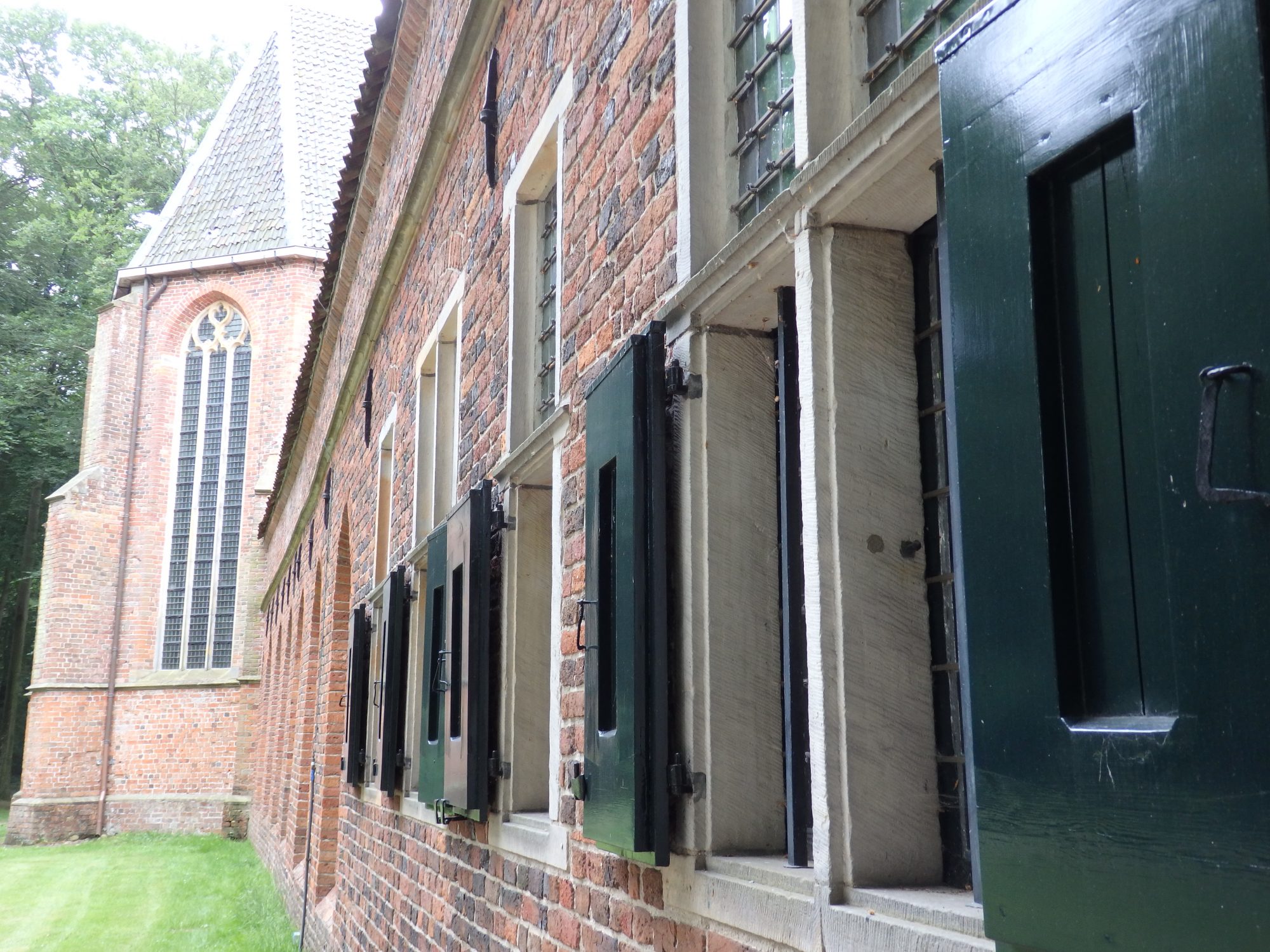
After a pleasant lunch at the hotel right next to the church (in the traditional Dutch style, with carpets covering the tables), I was just on time to pick up the kids again at the refugee center.


